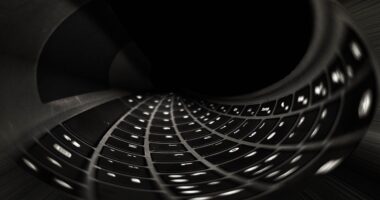
Some consumers won’t care as much about the chip advancements, except as it pertains to the camera improvements. The iPhone 12 has a 12-megapixel ultra wide rear camera, with a wider aperture that’s supposed to offer much better low-light performance. The camera supports an updated version of the high dynamic range (HDR) imaging standard. There are also Night Mode enhancements, and Night Mode works on both the rear ultra-wide and the front-facing selfie camera now.
Interestingly, the new iPhone 12 also has something called MagSafe—Apple borrowing the terminology from the now-extinct magnetized MacBook laptop charging ports and applying it to phones. It looks like this is less of a feature built directly into the phones, or the phone’s ports, and more of a standard for accessories; you can, for example, buy a magnetized MagSafe wallet for your phone, and it will improve the phone’s wireless charging capabilities with Apple-made and third-party wireless charging stations. The iPhone 12 won’t ship with a five-watt charging puck—though it will ship with a USB-C to Lightning cable.
Apple also announced something called the iPhone 12 Mini, essentially a smaller version of the aforementioned iPhone 12, with a 5.4-inch OLED display and the same chipset. The iPhone 12 starts at $799, while the iPhone Mini starts at $699.
Photo Finish
The iPhone 12 Pro lineup. That’s a lot of lenses—and the photo capabilities are a big part of the models’ appeal.
Photograph: AppleAnd then there are the new iPhone 12 Pro and Pro Max, the top of the line devices. They have fancier builds (and a couple new colors, including “stunning golf” and “Pacific blue”); bigger screens (the iPhone 12 Pro jumps up from a 5.8-inch display to a 6.1-inch display, while the iPhone 12 Pro max is the largest iPhone display ever, at 6.7 inches); and seriously souped up cameras. The form factors, though, are nearly identical to last year’s iPhone 11 Pro and Pro Max; Apple has simply extended the edges of the displays. Like the iPhone 12, these run on the A14 Bionic chip.
The cameras are the big sellers with these phones. The rear camera modules have three cameras: ultrawide, wide, and telephoto. Apple uses something called “Deep Fusion” to blend all of this captured data in a way that supposedly produces pro-grade photos. Night Mode on these phones is improved by the new LiDAR scanner, part of Apple’s push into more immersive AR (and, we think, an eventual push into AR glasses). Portrait mode has improved “bokeh” effects and Depth Control, and optical image stabilization is done at the sensor level. Apple is also introducing something called Apple ProRAW, better processing and editing for photos directly in the Photos app. And on the video side, the cameras support 4K HDR video recording, although that’s industry standard now for flagship phones.








